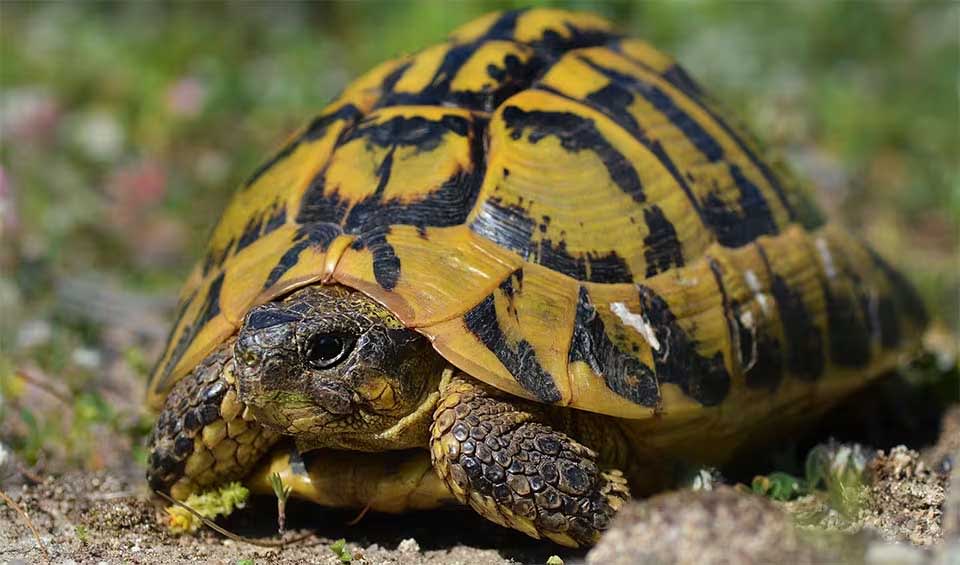A small, charming reptile known for its distinctive shell and gentle nature. Found primarily in southern Europe, especially in countries like Italy, Greece, and Spain, this tortoise is easily recognizable by its beautiful shell pattern. The shell, or carapace, is a warm yellow or tan color with bold, black markings that create a unique mosaic-like appearance. This striking pattern helps it blend into the Mediterranean landscapes where it lives. The underside of the shell, known as the plastron, is also yellow but usually has two distinct black bands running down its length.
Hermann’s tortoise has a rounded, slightly domed shell that protects it from predators. Its sturdy, scaled limbs and sharp claws are perfect for digging. It has a small, pointed head with bright, alert eyes and a beak-like mouth for tearing and chewing food. A distinctive feature is a spur at the end of its tail, which is more prominent in males. The well-defined beak and sharp mouth edges are ideal for their plant-based diet.
One of the most endearing traits of Hermann’s Tortoise is its diet. They are primarily herbivores, feasting on a variety of plants, including leaves, flowers, and fruits. Dandelions, clover, and other wildflowers are particular favorites. Their diet in the wild is quite varied, which helps them get all the nutrients they need to stay healthy.
Hermann’s Tortoises are also known for their curious and active nature. Despite their slow reputation, they can be quite lively, especially during the warmer months. They enjoy exploring their surroundings, foraging for food, and basking in the sun to regulate their body temperature. During the hot Mediterranean summers, they are often most active in the morning and late afternoon, avoiding the intense midday heat. In colder climates or during the winter months, they hibernate to conserve energy, burrowing into the ground or finding a cozy spot under leaves or logs.
Distribution
 Albania
Albania Bosnia And Herz.
Bosnia And Herz. Bulgaria
Bulgaria Croatia
Croatia Cyprus
Cyprus France
France Greece
Greece Italy
Italy Malta
Malta Official estimate
Official estimate
 Montenegro
Montenegro North Macedonia
North Macedonia Romania
Romania Serbia
Serbia Spain
Spain Turkey
TurkeyAnything we've missed?
Help us improve this page by suggesting edits. Glory never dies!
Suggest an editGet to know me
Terrestrial / Aquatic
Altricial / Precocial
Polygamous / Monogamous
Dimorphic (size) / Monomorphic
Active: Diurnal / Nocturnal
Social behavior: Solitary / Pack / Herd
Diet: Carnivore / Herbivore / Omnivore / Piscivorous / Insectivore
Migratory: Yes / No
Domesticated: Yes / No
Dangerous: Yes / No




